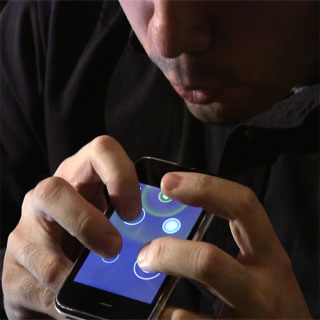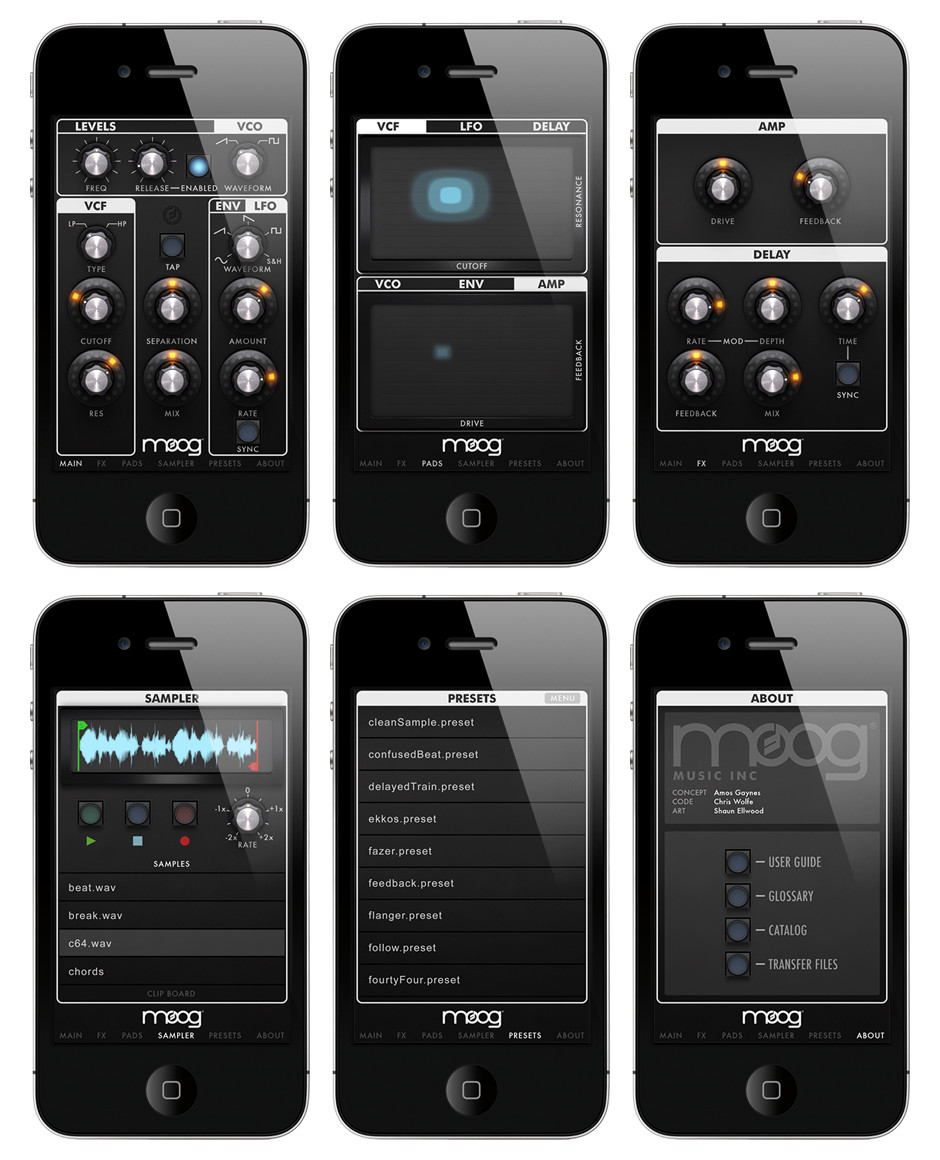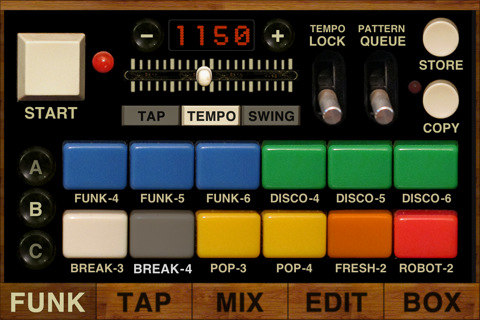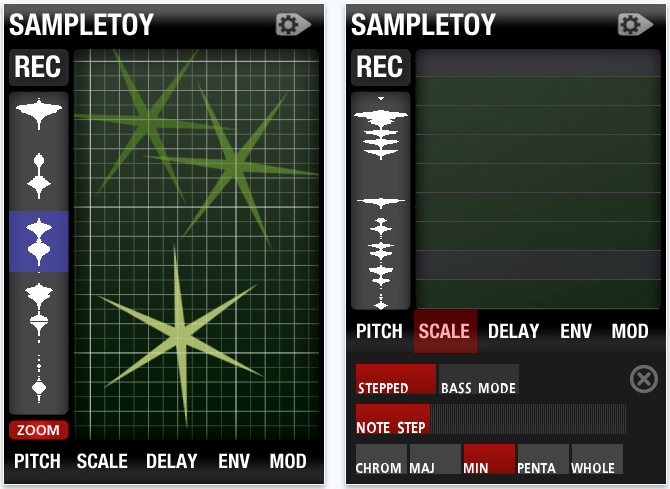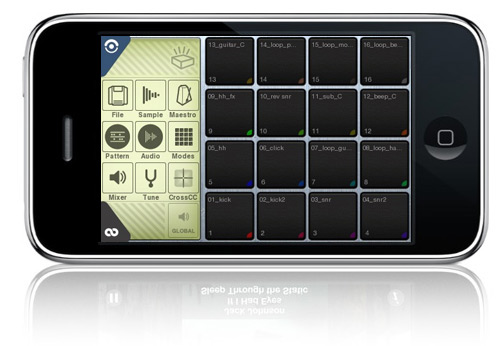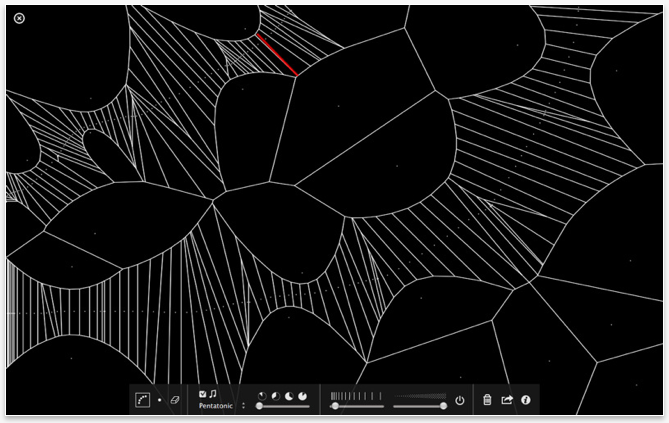 New Signal Process (NSP) burst onto the guitar and audio effects scene in 2010 with the aptly named BreakOut, a compact black box that allows you to run your guitar (or any other audio source) through an iPad or iPhone and process the sound with the many available apps. Now boasting an entire series of BreakOut models, including a stompbox made specifically for guitarists and a stereo unit for DJs and producers, NSP has earned a global reputation for its handmade, high quality equipment.
New Signal Process (NSP) burst onto the guitar and audio effects scene in 2010 with the aptly named BreakOut, a compact black box that allows you to run your guitar (or any other audio source) through an iPad or iPhone and process the sound with the many available apps. Now boasting an entire series of BreakOut models, including a stompbox made specifically for guitarists and a stereo unit for DJs and producers, NSP has earned a global reputation for its handmade, high quality equipment.
When we approached NSP about an interview, they happily obliged. As the company's mysterioso masterminds are currently based somewhere in the middle of the Arizona desert, where cell phone reception's spotty, we decided to conduct the interview over email. Typing out our questions and clicking "send," we expected they'd answer in a similar manner.
About a week later though, an email from a complete stranger appeared in our inbox with this explanation attached:
Hello. My name is John Spenhurst. I was hired via local Craigslist Tucson to transcribe these questions and answers from a cassette tape. It was in a ziplock bag left for me by a largish Saguaro cactus near Gates Pass in Tucson. They gave the coordinates to me via email - kind of in a riddle actually. It was sort of fun, but mostly a pain in the ass.
The questions were asked and answered by two voices, a male and female I think, whom I presume are this NSP thing, but the tape was a little warped from the sun and the voices were warbly and distorted. They took turns asking questions and answering but not in any order. I have never met them, and was just given instructions over email to follow and then paid via paypal. Here are your answers. I hope they help someone somewhere. They said that. But I think that too.
How did this seemingly cut-and-dry interview turn into something resembling an acid-fried treasure hunt? Well, as you'll see below, NSP isn't your typical electronics company. Instead of designing products that pull you into the digital vortex, they aim to bring the possibilities of technology out into the real world where you can literally touch them with your fingertips. It makes perfect sense that they managed to incorporate a cactus and warped cassette tape into this interview, rather than sticking to the usual pixels and circuits.
Check out our interview with NSP after the jump, along with photos and some must-see videos of their BreakOut pedals in action -- and stay tuned for a forthcoming feature in which NSP's founders share their Top 10 Most Essential Audio Apps.
3rd Ward: How did NSP get started?
New Signal Process: NSP has its roots in many places, but it mostly begins when we moved out of NYC to Williamsport, PA where I am originally from. We found ourselves with two things that we hadn’t had in NY for a long time: a giant studio space and a lot of free time. So in this space we started collecting old audio gear, organs, pianos, records, tape machines, etc.....essentially making an invention shack meets music/art studio. Towards the end of our time in PA we came up with the idea for the BreakOut and we worked on developing that which eventually came to fruition after our move to Portland, OR.
 3W: Did you have any experience designing or creating effects units or other electronics prior to starting NSP? How has any such experience (or lack thereof) factored into your work with NSP?
3W: Did you have any experience designing or creating effects units or other electronics prior to starting NSP? How has any such experience (or lack thereof) factored into your work with NSP?
NSP: No. Once we started fixing up and working on old gear, it got us in the mindset of what we could develop ourselves. We came to the effects backwards through trying to solve the I/O issue on the iPhone but now are moving into developing our first Fuzz Pedal - a Japanese Shin Ei FY-2 clone. It’s only in development now, but so far it sounds incredible! It’s the fuzz pedal I’ve always been looking for. That broken speaker, 60’s 70’s fuzz. I’m so excited on it right now.
I think ultimately, with this whole NSP adventure, we didn’t know what we could or couldn’t do and so that kind of allowed us to just dream things up and try and figure them out. There was no one there to tell us no, so when we reached walls, it was just up to us to find the right people and figure them out. And then NSP has just been about hopping over walls ever since.
3W: The motto on your website says "Inspire Creative Potential." Can you describe what that means and what sort of philosophy governs NSP?
NSP: We are artists first ourselves, and so our inspiration for NSP has always ultimately been to make tools that could help us and hopefully other artists out there have more possibilities to do creative things. When in design we tried to think about the different ways people could use it, or their different workflows, and try to come up with a simple solution for all of them.
And having designed the BreakOut that way, it is so cool because now we are starting to finally hear back from users telling us - oh, I run my iPad/BreakOut through this kind of processing to create this kind of sound, or someone used the Moog app to record an entire sound track for a film they made, or someone else wanted one for a sculpture installation with piezo mics under water. In fact, right now we are working on a performance/installation at the Tucson MOCA and we are using a Stereo BreakOut to run a signal generator off of the iPad and send one side to a speaker filled with water and the other side to a Chladni plate, so that you will be able to “see” the sound in both the sand patterns on the Chladni plate and the water patterns in the speaker.
 3W: Can you describe how an NSP unit functions?
3W: Can you describe how an NSP unit functions?
NSP: The BreakOut is an audio interface for the iPad/iPhone. We designed it to be used both in live setups and for recording.
Technically speaking, the iPhone and iPad don’t have a separate in and out like a MacBook pro. So the input is traveling through the same 1/8” jack as the output. For example the headphones that come with the iPhone that have a built in mic. They plug into the headphone jack, stereo sound comes out, and the mic sends mono signal in - All this happens through a unique 1/8” 4 conductor jack that the iPhone, iPad, and iPod touch all have.
The BreakOut has a detachable cable that plugs into the 1/8” 4 conductor jack and then into the BreakOut which has a separate 1/4” in and out, that you can plug your guitar/mic/line into, and then output to your amp/di/recording etc. The internal circuitry deals with the signal issues of trying to send instruments and lines through the iPhone. We designed the box itself to work like an effects pedal with a bypass. So you could easily introduce it into a live performance situation and use your iPad as a multi-effects processor. So you have a pedal that is a both distortion and T Pain.
3W: What has the design process been like for creating your products, from the original BreakOut to the newer Stomp and Stereo units?
NSP: The process has been changing. For the first TableTop BreakOut, as I mentioned before, it was brought on by our own interest in doing this. Once we had those out and people using them, this amazing thing happened where people starting writing and requesting variations. Asking for a stomp switch, or a horizontal layout, etc....So the Stomp and Stereo units really grew out of a marriage of ideas we had with people’s requests for those features.
Now, as I mentioned before, we are developing our first fuzz pedal, and hoping to make some other effects. And also working on designing an interface that would come out of the dock of the iPad that would be more recording oriented. The design process has ultimately gotten a lot better now as we have learned that things always take more time then we think and to plan for that. And we’ve also built an incredible team along the way and so now the creation process gets passed around and has more creative minds working on solutions and ideas which is great.
 3W: How are the NSP units manufactured?
3W: How are the NSP units manufactured?
NSP: The NSP units are all made by hand in Portland, OR. We work with different people to machine and screen print and then our engineer Ken assembles the electronics.
3W: What role has your own experience with touring and performing played in developing the NSP units?
NSP: I have seen a growing need for musicians to have an affordable way to replicate some of the sounds they are creating digitally in there home studios on stage. I know a lot of people too that don’t want to use computers on stage, but I think the iPad is a way more musical device and doesn’t feel so much like composing an email from stage.
3W: How long did it take for NSP to go from being just an idea in your head to becoming an actual unit that you could plug something into?
NSP: We had some different prototypes early on, but I would say the process took about a year to get from an idea stage to a place where we had something we could give out to our friends to try in different recording and performance situations.
3W: Based on your experience with NSP, do you have any words of advice or encouragement for makers or entrepreneurs looking to embark on similar endeavors?
NSP: Yes. Get out and do it. I think it has been a true life lesson. Learning about taking an idea and turning it into something real like this. The biggest lesson has been that when you run into walls, and you will run into many, that you just have to approach it as something to get around or go over - the only stopping point is your decision to stop. Other then that, it’s just figuring out one creative way after another to move around these walls, solve these problems - we call it hurdle jumping. And it turns out it’s a great skill for life in general. Working on any album or art project etc.
Also, great advice we found was just to get your idea out there. Its always going to feel like perfection is around the corner, and then you can show it to people, but really, once you introduce an idea to the outside world, it just grows that much more quickly if you listen. Tell people about it, get people trying it and using it.
 3W: You developed and debuted NSP prior to the emergence of similar products from bigger companies, such as the Griffin StompBox. What is it like to be making products in an industry that can often be dominated by bigger companies with very large cash flows?
3W: You developed and debuted NSP prior to the emergence of similar products from bigger companies, such as the Griffin StompBox. What is it like to be making products in an industry that can often be dominated by bigger companies with very large cash flows?
I think the interesting thing about this is that in the beginning it can feel like the big thing is the IDEA, but along the way you start to realize that its a lot more about pulling off the idea, and how you pull off the idea, and then being sensitive to how people are using this thing and working with them - being responsive and creative around that. It’s a lot more about being constantly creative and adaptive and less about that one “BIG IDEA”.
And so of course it is easier for these big companies to throw money at something or get instant distribution in Guitar Center, but we are able to adapt, make one-off designs, try crazy things, and ultimately our goal was never to be some big iPhone accessories company - it was to bring ideas to life that can be used for creative purposes and then to leverage that into other creative ideas, inventions, tools - whether it is mod’ing old Tube Mic Pres (which is another thing I’m working on NSP getting into!) or being able to build sound sculptures with iPads at the MOCA, or just perfecting that one fuzz tone I’ve been in search of for years.
 3W: Has being a small musician-run company set you apart?
3W: Has being a small musician-run company set you apart?
NSP: At the very least in the sense that I think we are designing to fit a more specific need that we know because we are in that world. Part of this is making a solution that works for live performance, but at the root of this is that we really value great sounding gear. We want inspiring gear to use on our projects and we want to make that same thing for other musicians and artists.
I think people pick up on this. Most of our customer feedback has really pointed this out. We are also able to communicate and participate with people authentically as they use our gear, and we can help them with it in a personal way. They also give us ideas and inspirations and send us their music that they are making, and so it feels more like a dialogue and less like a one way street.
3W: Your units are selling all over the world. What are some of the most far-flung places that orders have come from?
NSP: All over. For some reason a lot of orders in Australia and New Zealand. Also, Poland, Brazil, China. We just got an order from the Royal Theater in London. And we work with an amazing distribution company in Japan.
3W: Do you have plans for future products? Additional BreakOut models or other pedals or lines?
As I mentioned in some of the other questions, we are working on a Shin Ei FY-2 Fuzz pedal clone, an iPad USB recording interface, and then maybe/hopefully old reel to reel Tube mic pre mods!
3W: Anything else we should know?
NSP: We love ideas and questions! Whether you are an artist, musician, maker, mod, tech guru, synth builder -- its great to know people and ideas and if you’ve got a suggestion of a product you could use, or would like some advice regarding starting something - or want to collaborate - get in touch! It’s a big world out there and its more fun to be a network of people than to be a network of brands and companies. Like we said, most of us are artists first, and the technical bunch are artists in their own right - HELLO@NEWSIGNALPROCESS.COM
A Jimi Hendrix tribute video made using the BreakOut with Signals and Stuff's Distort+Delay app:
NSP's BreakOut pedal transforming Willow Smith into free jazz:
Friends of NSP making use of BreakOut pedals:
--John Ruscher
 Jan 19, 2012 Tweet
Jan 19, 2012 Tweet 


